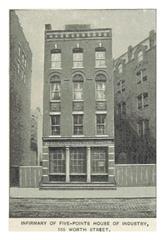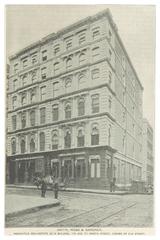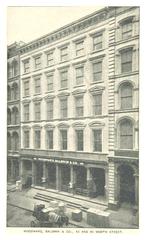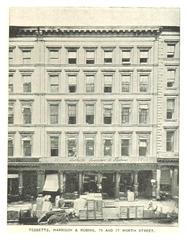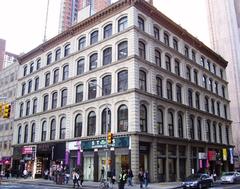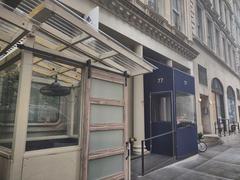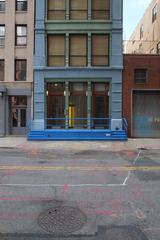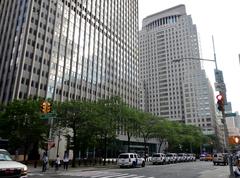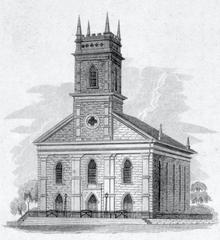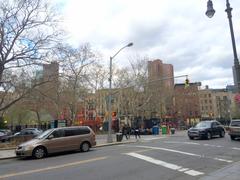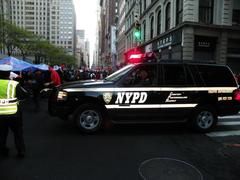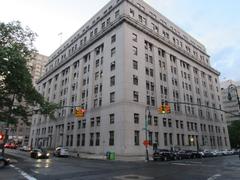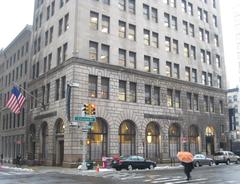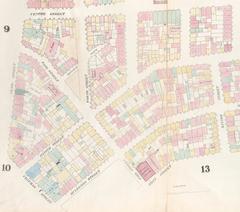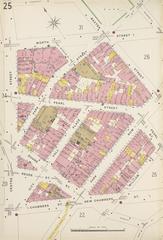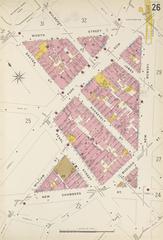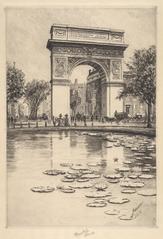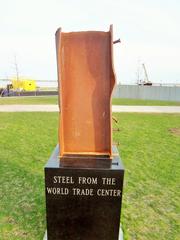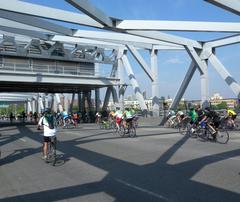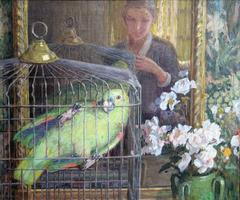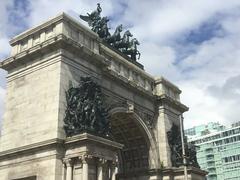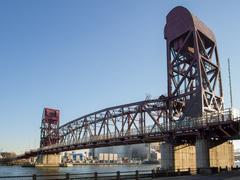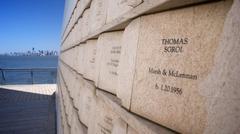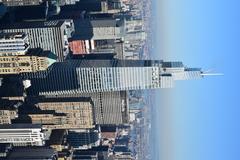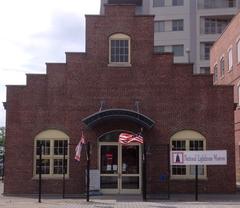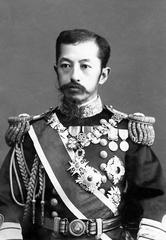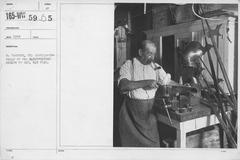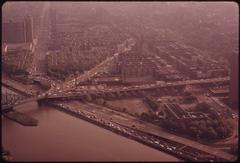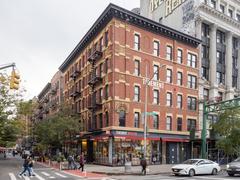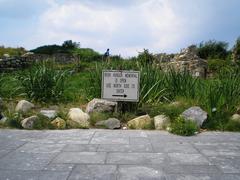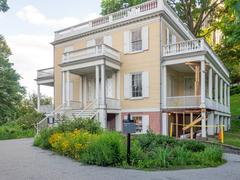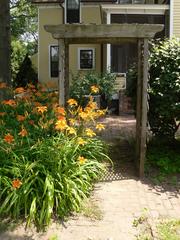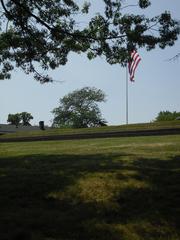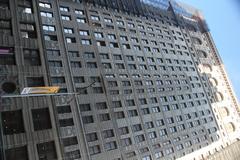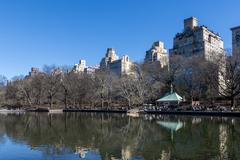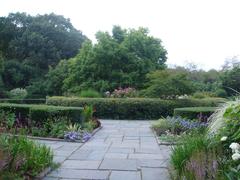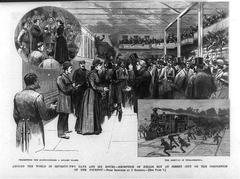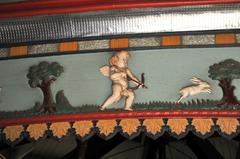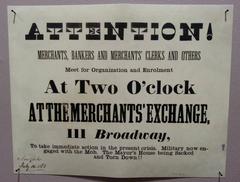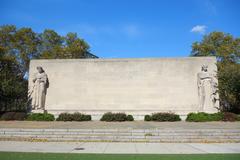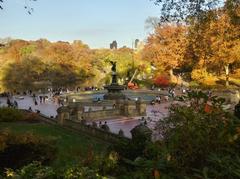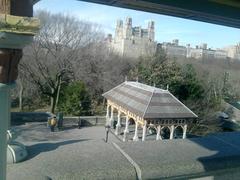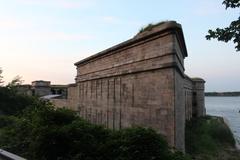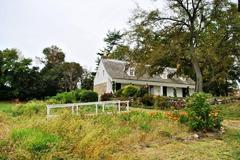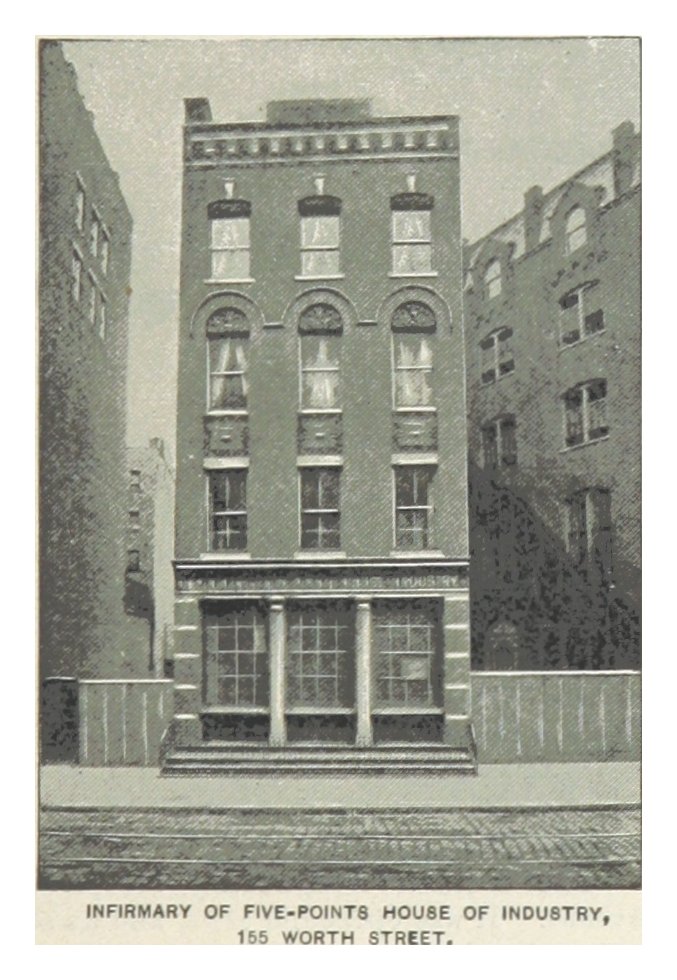
Comprehensive Guide to Visiting The Five Points, New York City, United States
Date: 01/08/2024
Introduction
The Five Points neighborhood in Lower Manhattan, New York City, stands as one of the most historically rich and culturally significant areas in the city’s vast tapestry. Known for its tumultuous past, marked by crime, poverty, and ethnic diversity, Five Points has evolved over centuries, transforming into a vibrant part of the city that continues to attract historians and tourists alike. Initially, the area was a serene locale featuring the Collect Pond, a freshwater lake that was a popular destination for leisure activities. However, the early 19th century saw significant changes as the pond was filled in, paving the way for the urban development that led to the creation of the infamous Five Points intersection (History101, Wikipedia).
The neighborhood’s name, derived from the unique intersection of five streets, became synonymous with New York City’s first free Black settlement and later, a melting pot for various immigrant communities, including the Irish and Chinese. This diversity, while contributing to a rich cultural mosaic, also brought about significant social challenges, from overcrowded tenements and disease to gang violence and political corruption (ThoughtCo, Grunge). Prominent figures such as Charles Dickens and Abraham Lincoln visited the area, drawn by its notorious reputation and complex social dynamics (Eye and Pen).
Today, the legacy of Five Points is preserved through museums, historical markers, and ongoing cultural efforts. The area, now part of Chinatown and the Civic Center, continues to be a testament to the resilience and transformation of urban spaces. This comprehensive guide aims to delve into the rich history, cultural significance, and practical information for visitors interested in exploring the storied past and dynamic present of Five Points.
Table of Contents
Historical Background
Early Development and Transformation
The Five Points neighborhood has a rich and complex history that dates back to the early 19th century. Initially, the area was a tranquil locale characterized by natural features such as the Collect Pond, a freshwater lake that was a popular spot for picnics and leisure activities (History101). However, by 1802, significant changes began to take place. The Collect Pond was filled in, and the surrounding area, including Bunker Hill, was demolished to make way for urban development. This transformation laid the groundwork for what would become one of New York City’s most infamous neighborhoods.
The Birth of Five Points
The name “Five Points” originated from the unique intersection of five streets: Worth, Baxter, Park, Mulberry, and the now-vanished Anthony Street (Wikipedia). By 1809, Anthony Street was extended east to the junction of Cross and Orange Streets, creating the five-pointed intersection that gave the neighborhood its name. Over time, these streets were renamed and reconfigured, but the name “Five Points” persisted as a historical reference.
Demographics and Early Inhabitants
Five Points was initially home to New York City’s first free Black settlement, a significant milestone in the city’s history (History101). By the mid-19th century, the neighborhood had become a melting pot of various ethnic groups, including Irish immigrants fleeing the Great Famine, African Americans, and later, Chinese immigrants. This diverse demographic mix contributed to the neighborhood’s vibrant culture but also led to significant social challenges.
Notoriety and Social Issues
By the mid-1800s, Five Points had gained international notoriety as a densely populated, disease-ridden, and crime-infested slum (ThoughtCo). The neighborhood was infamous for its overcrowded tenements, rampant disease outbreaks, and high crime rates. It was said to have the highest murder rate in the world at one point, with some sources claiming an average of 15 murders every night (Grunge). While these figures may have been exaggerated by sensationalist tabloid newspapers, there is no doubt that Five Points was a dangerous and impoverished area.
Gang Activity and Political Corruption
Five Points was also known for its gang activity and political corruption. Notorious gangs such as the Bowery Boys and the Dead Rabbits operated in the area, engaging in street brawls and various criminal activities (Eye and Pen). The neighborhood’s political landscape was equally tumultuous, with local politics in the Old Sixth Ward setting important precedents for the election of Catholics to key political offices (Wikipedia).
Cultural Significance
Despite its many challenges, Five Points was a significant cultural hub. The neighborhood was one of the first large-scale instances of voluntary racial integration in American history, with Black Americans and Irish immigrants cohabiting the same space (Wikipedia). This cultural diversity led to a unique blend of traditions, music, and social practices that left a lasting impact on New York City’s cultural landscape.
Visits by Notable Figures
The notoriety of Five Points attracted the attention of several notable figures. In 1842, the famous author Charles Dickens visited the neighborhood during his first trip to America, driven by his curiosity about its infamous reputation (ThoughtCo). Nearly two decades later, Abraham Lincoln visited a Sunday school in Five Points while considering a run for the presidency. His visit was widely reported in newspapers and contributed to his public image during his 1860 campaign.
Urban Renewal and Decline
By the late 19th century, efforts to renew and redevelop Five Points were underway. The neighborhood’s overcrowded tenements and unsanitary conditions were gradually replaced by modern infrastructure. Streets were redirected and renamed, and new buildings were constructed, leading to the eventual disappearance of the original Five Points (Eye and Pen). Today, the area that once housed Five Points is part of Manhattan’s Chinatown and the Civic Center, with only historical markers and museum exhibits preserving its legacy (Wikipedia).
Preservation of History
Efforts to preserve the history of Five Points are ongoing. Museums such as the Museum of the City of New York have curated exhibits that showcase the neighborhood’s past, providing visitors with a glimpse into the lives of its former residents (Eye and Pen). Historical markers and plaques have been installed to commemorate significant sites and events, ensuring that the story of Five Points continues to be told for future generations.
Visitor Information
Visiting Hours and Tickets
Five Points, now part of Manhattan’s Chinatown and Civic Center, does not have specific visiting hours or ticket prices as it is an open urban area. However, visitors can explore historical markers and sites at any time. Museums and exhibits related to Five Points may have their own operating hours and ticket prices, so it is advisable to check their official websites for the most up-to-date information.
Nearby Attractions
Visitors to the former Five Points area can also explore nearby attractions such as:
- Chinatown: A vibrant neighborhood with rich cultural heritage, offering a variety of shops, restaurants, and markets.
- Civic Center: Home to important government buildings and landmarks, including the New York City Hall and the Tweed Courthouse.
- African Burial Ground National Monument: A significant historical site commemorating the African American community’s contributions to New York City.
Travel Tips
- Public Transportation: The area is easily accessible by subway, with several lines serving nearby stations such as Canal Street and Chambers Street.
- Walking Tours: Consider joining a guided walking tour to gain deeper insights into the history and significance of Five Points.
- Photography: Don’t forget to bring your camera to capture the historical markers and vibrant street scenes.
FAQs
Q: What is the significance of the name “Five Points”? A: The name “Five Points” comes from the unique intersection of five streets: Worth, Baxter, Park, Mulberry, and the now-vanished Anthony Street.
Q: Are there any guided tours available in Five Points? A: Yes, several guided walking tours are available that focus on the history and cultural significance of Five Points and its surrounding areas.
Q: What are some nearby attractions to visit? A: Nearby attractions include Chinatown, the Civic Center, and the African Burial Ground National Monument.
Q: Is there an admission fee to visit Five Points? A: No, Five Points is an open urban area with no admission fee. However, museums and exhibits related to Five Points may have their own ticket prices.
Conclusion
The historical background of Five Points is a testament to the complexities of urban development, social integration, and cultural evolution. From its early days as a tranquil area with natural features to its transformation into a notorious slum and eventual redevelopment, Five Points has played a crucial role in shaping the history and culture of New York City. Today, the neighborhood’s legacy lives on through ongoing preservation efforts and the vibrant communities that have emerged in its place.
For more information on Five Points and other historical sites in New York City, download our mobile app, check out our other posts, or follow us on social media for the latest updates.
